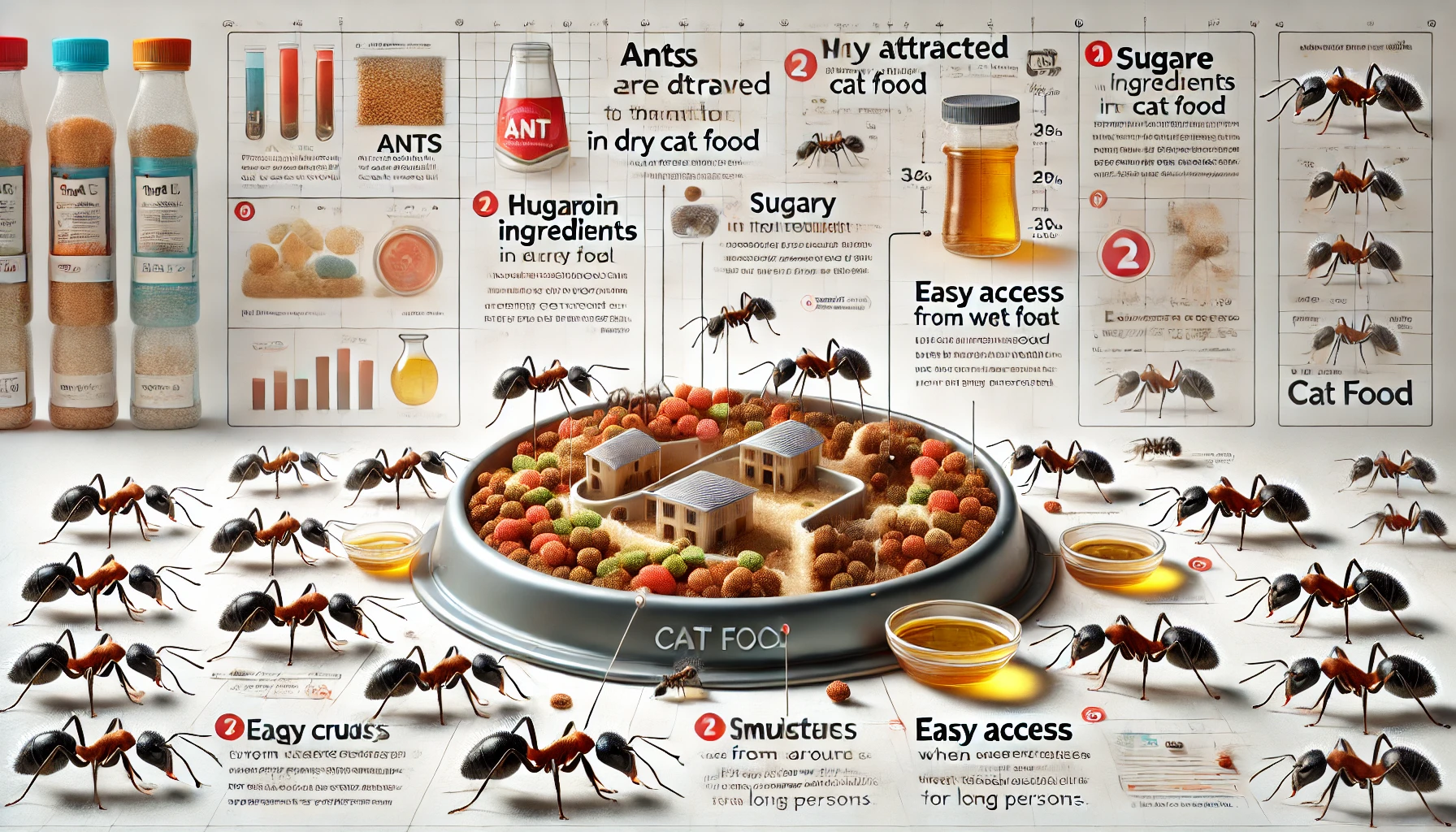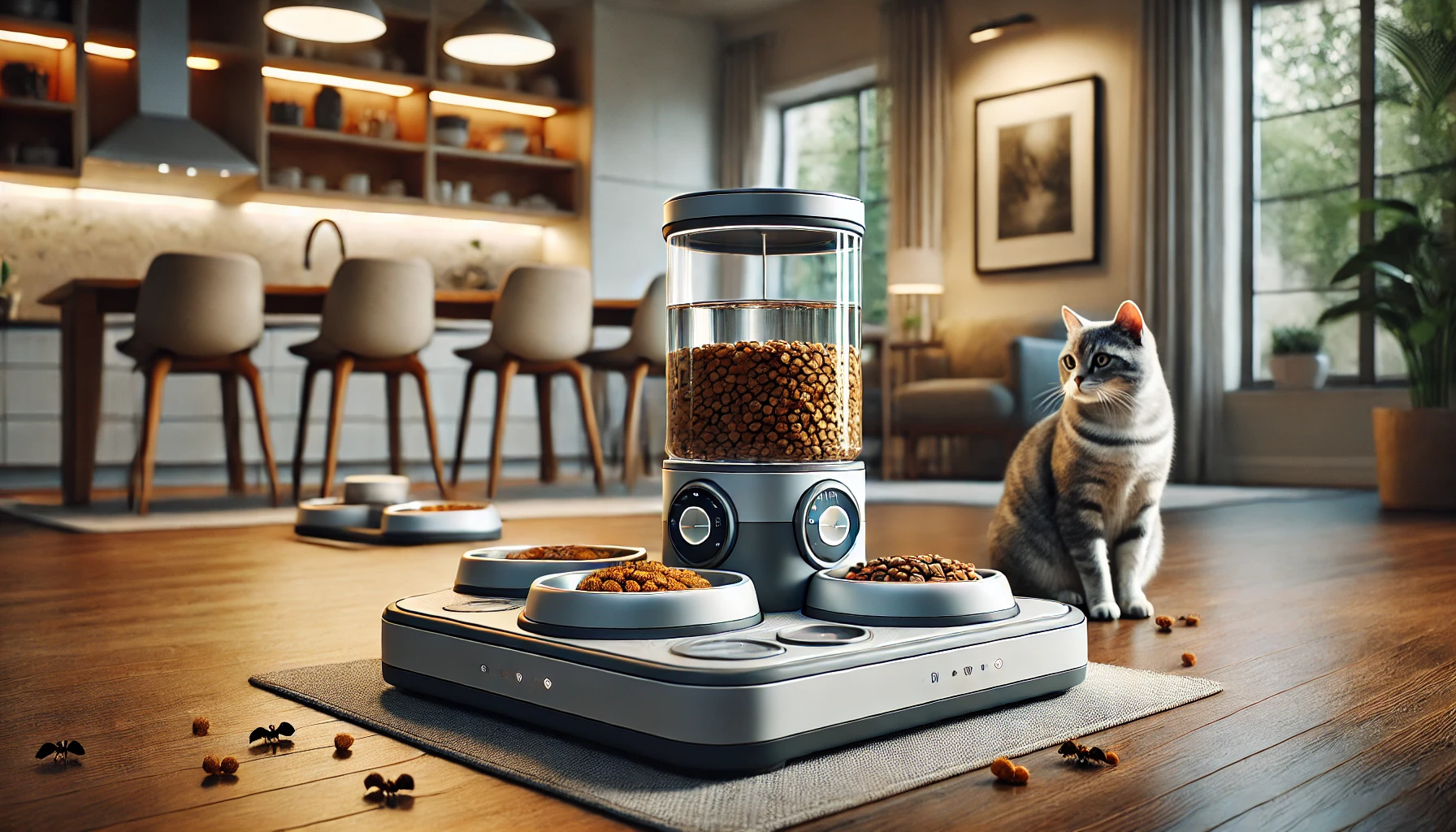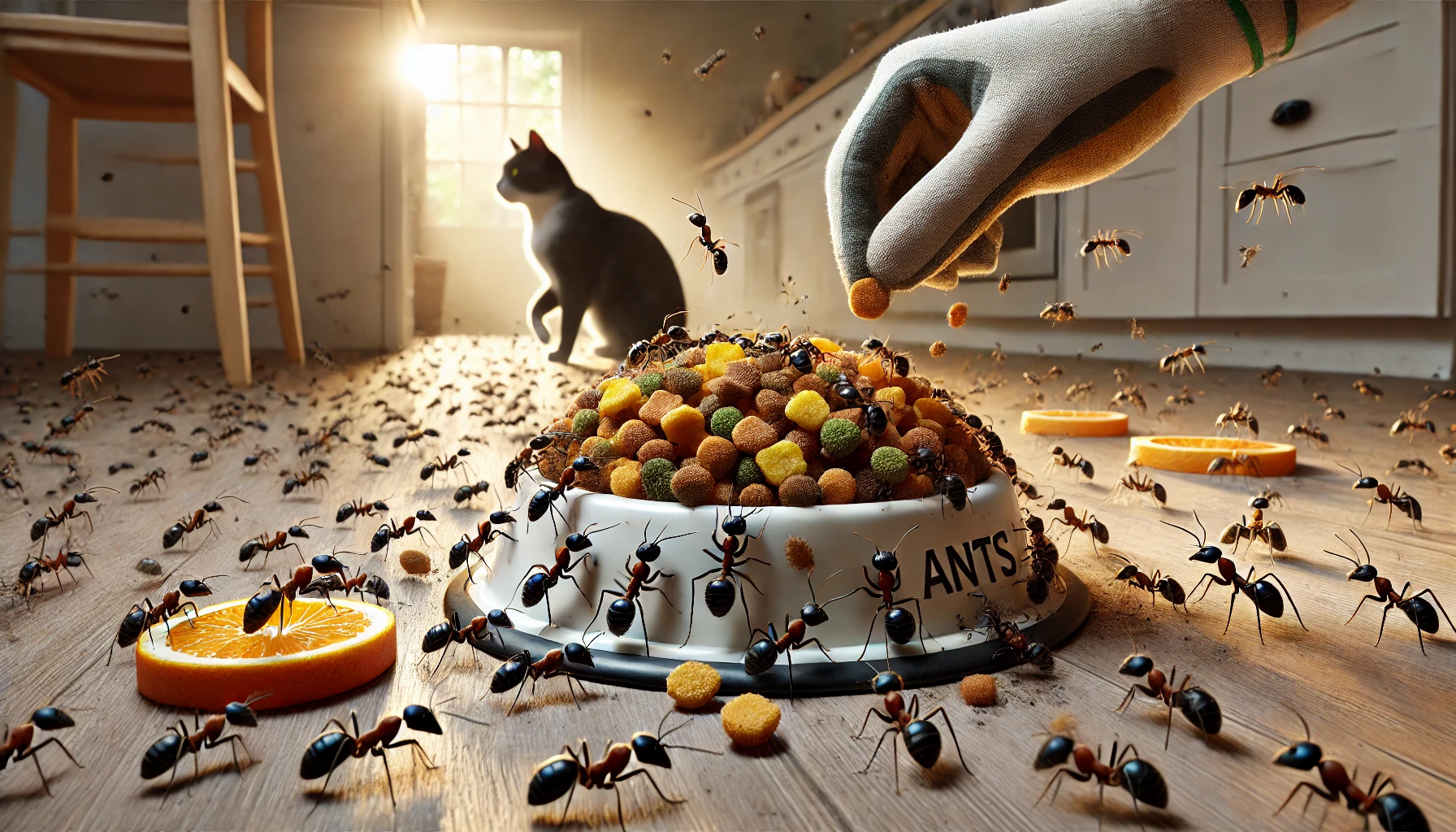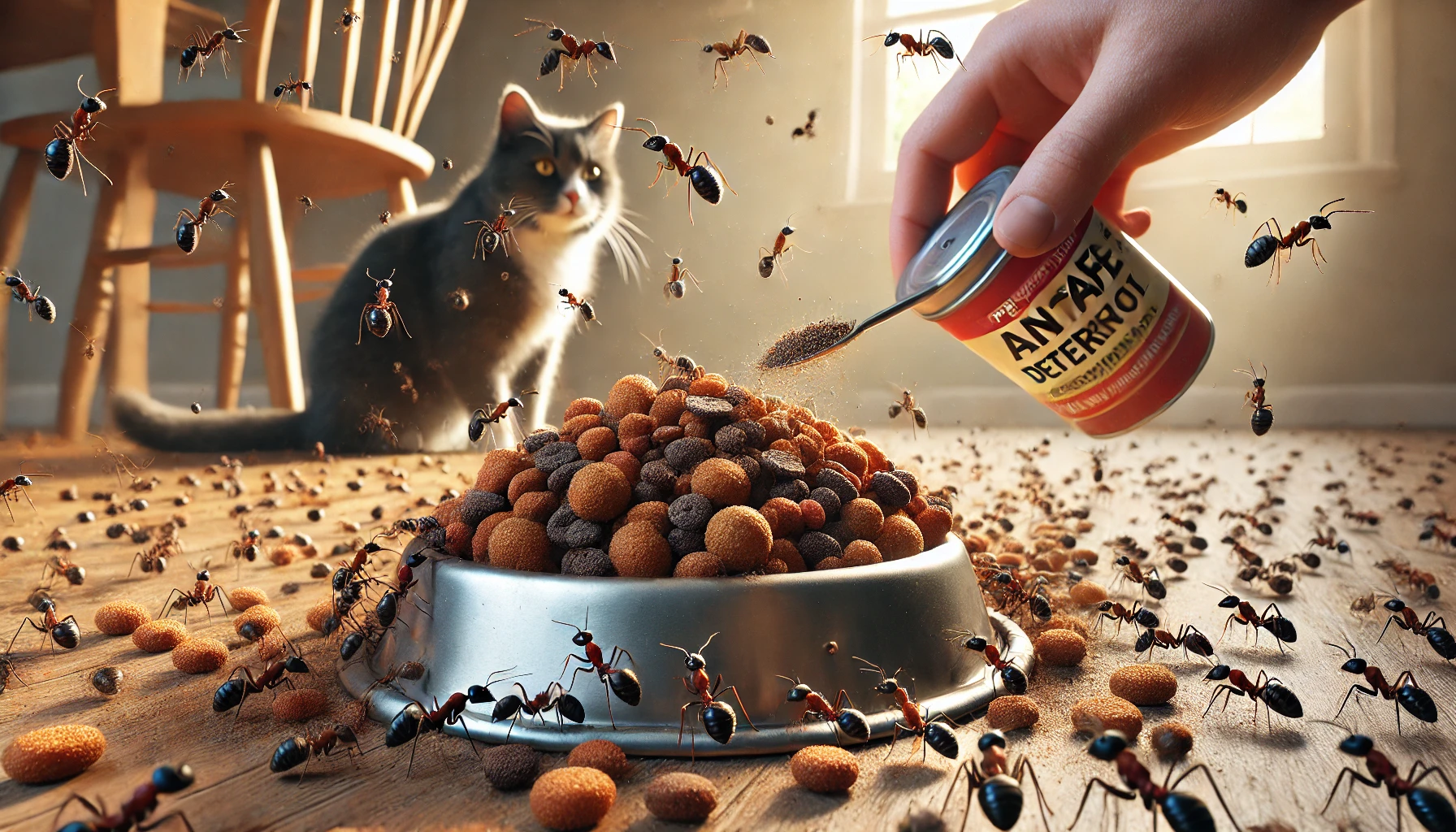Key Takeaways
- Maintain a clean and tidy feeding area to prevent ants from reaching your cat’s food.
- Use water moats or elevated feeding stations to create a barrier against ants.
- Store food securely and keep the surrounding area clean to deter pests.
- Leverage natural repellents or safe physical barriers to keep ants away.
- Seek professional help for persistent infestations that are difficult to control.
 Ants try to invade your cat’s food which can quickly escalate from minor inconvenience to persistent frustration. Not only are ants unsightly, but they can contaminate cat food, making it unappetizing or unsafe for your feline companion. Understanding why ants are attracted to your cat’s meals is key to effectively keeping them out.
Ants try to invade your cat’s food which can quickly escalate from minor inconvenience to persistent frustration. Not only are ants unsightly, but they can contaminate cat food, making it unappetizing or unsafe for your feline companion. Understanding why ants are attracted to your cat’s meals is key to effectively keeping them out.
In this guide, you’ll discover practical and proven methods to keep ants away from cat food bowls, tailored explicitly for US households.
Why Are Ants Attracted to Cat Food?
Ants are constantly on their way for lookout for food sources rich in nutrients. Cat food, particularly wet food and dry kibble offers abundant proteins, fats, and moisture—all highly appealing to ants. These miniscule insects rely on their strength of scent trails to locate food, then they quikly alert their colony about it and turn your pet’s feeding area into their gathering place. To keep ants away effectively, it’s important to disrupt their scent trails, deny them access, and eliminate attractive food residues.

Not getting a solution?
Get your free pest control estimate today!Practical Tips to Prevent Ants from Infesting Cat Food
1. Clean the Feeding Area Frequently Ants are attracted to even the smallest crumbs or residue.- Wash your cat’s bowl daily with warm, soapy water.
- Immediately clean any spilled food or crumbs.
- Regularly mop or vacuum the feeding area.
- Invest in bowls with built-in moats.
- Create a DIY moat by placing your cat’s bowl inside a shallow dish filled with water.
 3. Store Cat Food Properly
Ants can easily detect an open bag of cat food.
3. Store Cat Food Properly
Ants can easily detect an open bag of cat food.
- Use airtight containers made of sturdy plastic or glass.
- Keep food containers in cool, dry places off the ground.
- Avoid leaving open food bags out in the open.
- Spray an appropriate mixture of equal parts of water and vinegar around your cat’s feeding area.
- Sprinkle a small amt of cinnamon powder around the perimeter of the feeding area.
- Place cotton balls lightly scented with peppermint oil nearby, but away from the cat’s direct reach.
- Lightly sprinkle DE around the edges of the feeding area or along entry points.
- Repeat DE in timely manner, especially after cleaning or if wet.
 6. Elevate the Feeding Area
Placing your cat’s bowl on a elevated platform or table can help in effectively reducing ant issues.
6. Elevate the Feeding Area
Placing your cat’s bowl on a elevated platform or table can help in effectively reducing ant issues.
- Use feeding stations designed with elevated stands.
- Ensure the stand is stable and comfortable for your cat.
- Draw a chalk circle around the feeding area (ants typically avoid chalk lines).
- Place double-sided sticky tape around the perimeter.
- Check windows, doors, baseboards, and cracks regularly.
- Seal gaps with silicone caulk or weatherstripping.
- Feed your cat smaller portions at scheduled meal times.
- Remove uneaten food within 30-60 minutes.
- Set bait traps far from your home’s entry points and away from pets.
- Choose pet-safe bait stations.
- Choose bowls with integrated water moats or anti-ant materials.
- You can also check customer reviews before buying the product for satisfactory response.
 12. Consult Professional Pest Control
If the ant problem continues despite of trying DIY methods, professional intervention is now necessary:
12. Consult Professional Pest Control
If the ant problem continues despite of trying DIY methods, professional intervention is now necessary:
- Contact a licensed pest control professional centre.
- Ask specifically for pet-safe ant treatments.
Follow these tips consistently, and your cat’s mealtimes will remain safe, healthy, and ant-free!
If you feel things have gone out of control, it is advised to contact pest control professionals. Our team can provide a customized approach to protect your home effectively.
Visit our Species, Control, and DIY Guide sections for additional resources on ants and ways to tackle a ants infestation





